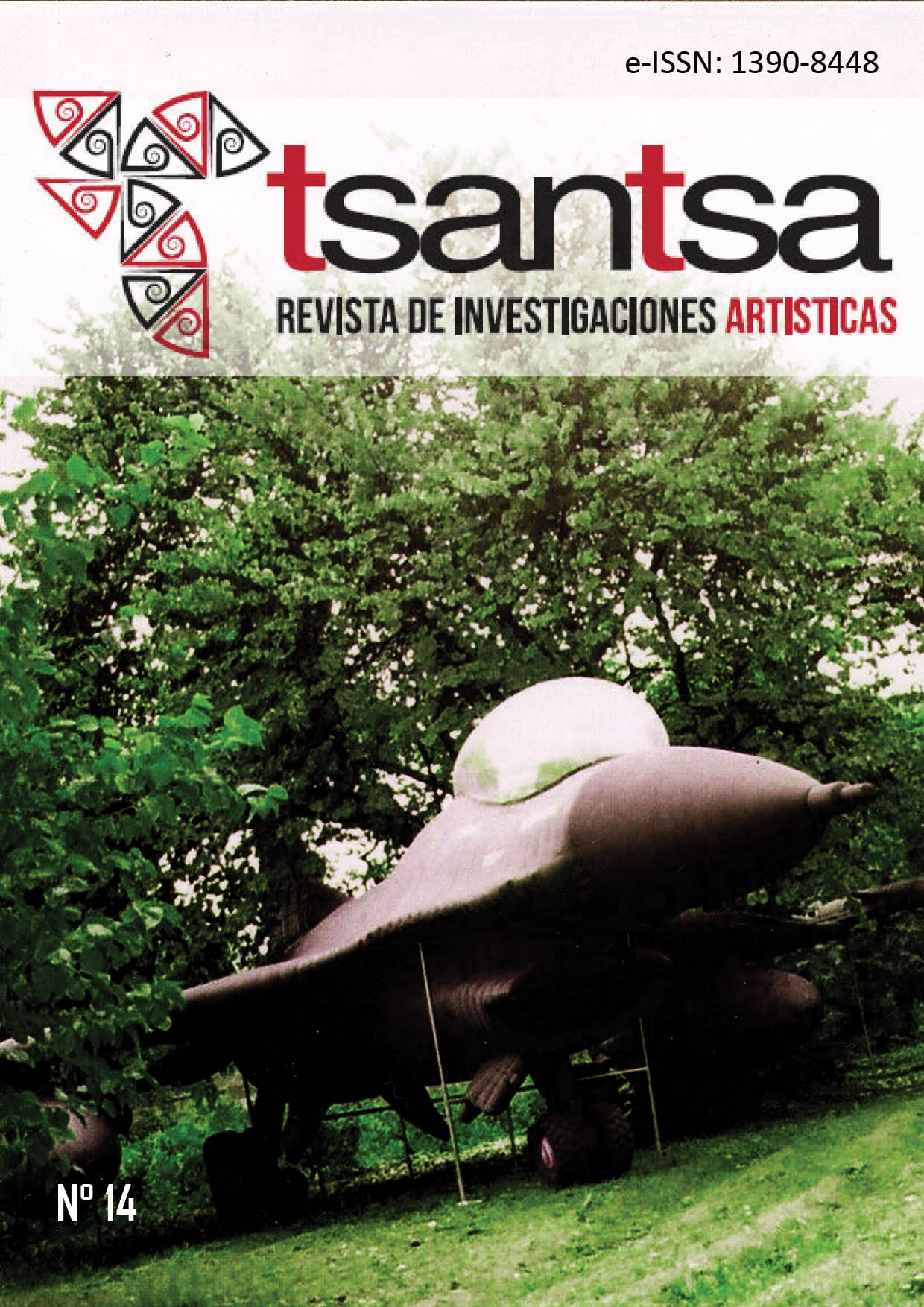The Construction of the Mediterranean Queer Landscape
DOI:
https://doi.org/10.18537/tria.14.01.06Abstract
This research aims to address two concepts, liminality and queerness, by analysing the journeys and stays around the Mediterranean by prominent artists during the nineteenth and twentieth centuries. The hypothetical assumption is that the Mediterranean has offered the liminal conditions that have allowed it to become the preferred destination for travellers with a queer sexual orientation. These characters have expressed their sexual interests in their literary, pictorial, photographic, cinematographic, etc. work, thus creating an intimate and personal geography that ended up being embodied in an architecture that served as a refuge and theatre for their double homosexual existence. In them it is possible to appreciate a whole aesthetic that we can call queer, which starts in the architecture and ends in the clothing, and which has been possible to construct thanks to the existence of this liminal Mediterranean.
KEYWORDS: Queer, liminality, Mediterranean, Orientalism, architecture.
Downloads
References
Aldrich, R. (2002). The seduction of the Mediterranean: Writing, art and homosexual fantasy. Routledge.
Aldrich, R. (2008). Colonialism and Homosexuality. Routledge.
Baros, M. (2017) La construcción de la interioridad en el orientalismo arquitectónico : los refugios orientalistas de Pierre Loti, Frederic Leighton y Claude Monet. Editorial Académica Española.
Barrington, R. (2018). The life, letters and work of Frederic Leighton; Volume 1. Franklin Classics Trade Press.
Baudrillard, J. (1991). El sistema de Los objetos. Siglo XXI Ediciones.
Belmonte Barrenechea, M. (2015). Peregrinos de la belleza : viajeros por Italia y Grecia. Acantilado.
Betsky, A. (1997). Queer space: Architecture and same sex desire. William Morrow.
Boone, J. (2015). The Homoerotics of Orientalism. Columbia University Press.
Bozdoǧan, S. (1988). Journey to the east: Ways of looking at the orient and the question of representation. Journal of Architectural Education, 41(4), 38–45. https://doi.org/10.1080/10464883.1988.10758500
Brandlhuber, M. T. (Ed.). (2022). In the temple of the self. The artist’s residence as a total work of art: Europe and America 1800-1948. Hatje Cantz.
Burton, R. Francis. A plain and literal translation of the Arabian nights' entertainments, now entitled The book of the thousand nights and a night: with introduction, explanatory notes on the manners and customs of Moslem men, and a terminal essay upon the history of The nights. Shammar ed. [Denver, Colo.]: Printed by The Burton Club for private subscribers only, 1885.
Crinson, M. (2013). Empire Building: Orientalism and Victorian Architecture. Routledge.
Dakers, C. (1999). The Holland park circle: Artists and Victorian society. Yale University Press.
Davidson, J. (2009). The Greeks and Greek love: A bold new exploration of the ancient world. Random House.
Denisoff, D. (2004). Sexual visuality from literature to film 1850-1950. Palgrave Macmillan UK.
Diéguez, I. (2014). Escenarios liminales. Teatralidades, performatividades, políticas. Editorial Paso de Gato.
Dowling, L. (1994). Hellenism and homosexuality in Victorian oxford. Cornell University Press. https://doi.org/10.7591/9780801468742
Flint, K. (2008). The Victorians and the visual imagination. Cambridge University Press.
Hanegraaff, W. J., & Kripal, J. J. (2008). Hidden intercourse: Eros and sexuality in the history of western esotericism. Brill.
Hyam, R. (2017). Empire and Sexuality. Manchester University Press Melland Schill Studies.
Kestner, J. A. (1995). Masculinities in Victorian Painting. Scolar Press.
Kris, E., & Kurz, O. (1981). Legend, myth, and magic in the image of the artist: A historical experiment. Yale University Press.
Larsson, M., & Johnsdotter, S. (Eds.). (2015). Sexual fantasies: At the convergence of the cultural and the individual. Peter Lang AG.
Leighton House. https://www.rbkc.gov.uk/museums/history-leighton-house
MacCormak, P. (2009). Queer Posthumanism: Cyborgs, Animals, Monsters, Perverts. En Noreen, G. (Ed.). Ashgate research companion to queer theory. Ashgate Gower.
MacKinnon, K. (1997). Uneasy pleasures: Male as erotic object. Cygnus Arts.
Mary Roberts, "The Resistant Materiality of Frederic Leighton’s Arab Hall", British Art Studies,
Issue 9, https://dx.doi.org/10.17658/issn.2058-5462/ issue-09/mroberts
Mohammadzadeh Kive, Solmaz. “The Exhibitionary Construction of the Islamic Interior”. In Oriental Interiors: Design, Identity, Space, edited by John Potvin. London, England: Bloomsbury Academic, 2015.
Netton, I. R. (Ed.). (2013). Orientalism Revisited: Art, Land and Voyage. Routledge.
Orlove, B. S. (Ed.). (1997). Allure of the foreign: Imported goods in post-colonial Latin America. University of Michigan Press.
Parsons, D. L. (2003). Streetwalking the metropolis: Women, the city and modernity. Oxford University Press.
Pearce, S. M. (1999). On collecting: An investigation into collecting in the European tradition. Routledge.
Potts, A. (2000). Flesh and the ideal: Winckelmann and the origins of art history. Yale University Press.
Potvin, J. (Ed.). (2015). Oriental interiors: Design, identity, space. Bloomsbury Academic.
Reeser, T. W. (2016). Setting Plato straight: Translating ancient sexuality in the renaissance. University of Chicago Press.
Sasso, E. (Ed.). (2020). Late Victorian orientalism: Representations of the east in nineteenth-century literature, art and culture from the pre-raphaelites to John La Farge. Anthem Press.
Sorman, G. (2021). Mon dictionnaire du Bullshit. Grasset.
Thomas, C. (2009). On Being Post-Normal: Heterosexuality after Queer Theory. En Noreen, G. (Ed.). Ashgate research companion to queer theory. Ashgate Gower.
Turberfield, P. J. (2008). Pierre Loti and the theatricality of desire. Brill/Rodopi. https://doi.org/10.1163/9789401205573
Vercier B., Mélot J.P., Scaon, G. (2003). La maison de Pierre Loti à Rochefort. Paris: Editions du Patrimoine CMN.
Weir, D. (1995). Decadence and the making of modernism. University of Massachusetts Press.
Young, R. J. C. (2005). Colonial Desire: Hybridity in Theory, Culture and Race. Routledge.
Ziter, E. (2007). The orient on the Victorian stage. Cambridge University Press.
Downloads
Published
How to Cite
Issue
Section
License

This work is licensed under a Creative Commons Attribution-NonCommercial-ShareAlike 4.0 International License.



